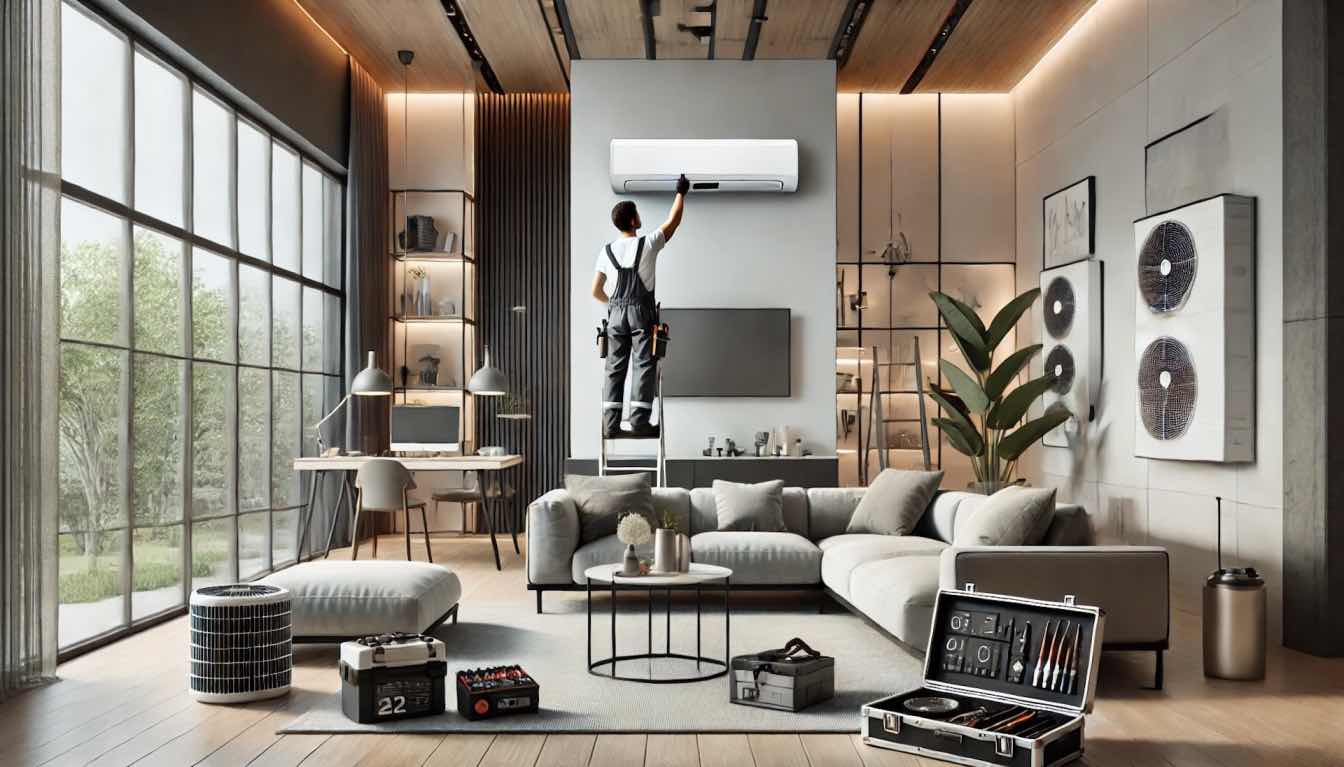Maintaining an air conditioning (AC) system is crucial for ensuring comfort, especially during the sweltering summer months. A well-functioning AC unit can be the difference between a cool, relaxing environment and an unbearable heatwave. However, when your AC starts to malfunction, it can disrupt your comfort and lead to higher energy bills. This guide aims to help homeowners troubleshoot and resolve common AC issues, empowering you to address problems quickly and efficiently.
Understanding Your AC System
Before diving into troubleshooting, it’s essential to understand how your AC system works and its key components. There are several types of air conditioning systems, including central air conditioners, ductless mini-splits, and window units. Each type has its specific setup and components, but they all operate based on the same fundamental principles of the refrigeration cycle.
A typical central air conditioning system comprises several key components: the compressor, condenser coil, evaporator coil, expansion valve, and air handler. The compressor is the heart of the system, compressing refrigerant gas and pumping it through the coils. The condenser coil releases heat from the refrigerant to the outside air, while the evaporator coil absorbs heat from the indoor air, cooling it. The expansion valve regulates the flow of refrigerant into the evaporator coil, ensuring efficient heat exchange.
If you own a Trane system or any other brand, it’s valuable to be familiar with common issues specific to your unit. For instance, Trane AC repair services are often sought when dealing with unique problems or complex repairs that require specialized knowledge. Familiarizing yourself with the specific needs of your brand can help you make more informed decisions about maintenance and repairs.
Common AC Problems and Symptoms
One of the most frustrating experiences as a homeowner is an AC system that won’t turn on. If your unit fails to power up, the first step is to check the power supply. Ensure that the unit is plugged in and that the circuit breaker hasn’t tripped. Sometimes, a simple reset of the breaker can resolve the issue. If the power supply appears to be fine, inspect the thermostat. Make sure it is set to "cool" and that the batteries, if applicable, are functional. A malfunctioning thermostat can prevent the system from turning on or functioning correctly.
Inadequate cooling is another common issue. If your AC is running but not cooling your home effectively, the problem might be due to dirty air filters, refrigerant leaks, or a faulty thermostat. Air filters can become clogged with dust and debris, restricting airflow and reducing cooling efficiency. Regularly replacing or cleaning the filters can help maintain optimal performance. Low refrigerant levels often indicate a leak, which requires professional attention to repair. A malfunctioning thermostat can also cause inadequate cooling by failing to accurately sense the temperature or communicate with the system.
Unusual noises from the AC unit can be alarming and may indicate underlying issues. If you hear clanging, rattling, or grinding sounds, it could be due to loose parts, worn-out bearings, or debris in the unit. Inspect the coils and other components for any visible debris and ensure all parts are securely fastened.
DIY Troubleshooting Steps
When your AC system won’t turn on, start by checking the power supply. Ensure the unit is plugged in, and verify that the circuit breaker hasn’t tripped. If everything appears to be in order, examine the thermostat settings. Make sure it is set to "cool" and that the batteries are working if it’s a battery-operated model. Sometimes, a simple adjustment or battery replacement can restore functionality.
If your AC is not cooling effectively, replacing the air filters is a good starting point. Dirty filters can restrict airflow and reduce cooling efficiency. Regularly replacing or cleaning filters can improve performance. Additionally, check the refrigerant levels. Low refrigerant may indicate a leak, which requires professional repair. Also, ensure that the thermostat is functioning correctly, as an inaccurate thermostat can affect cooling performance.
Unusual noises from the AC unit may be addressed by inspecting and cleaning the coils. Debris and dirt can cause noise, so a thorough cleaning can often resolve this issue. Also, check for loose components and tighten any that may be contributing to the noise. If the problem persists, it may indicate more severe issues that require professional attention.
When to Call a Professional
While DIY troubleshooting can address many common issues, some problems require professional intervention. Complex issues such as refrigerant leaks, compressor problems, or electrical faults often need specialized knowledge and tools. Additionally, if you encounter safety concerns, such as high-voltage components or gas leaks, it is essential to seek professional help to avoid potential hazards.
Sometimes, the cost of professional repairs can be more economical than ongoing DIY attempts, especially if the issue is severe or persistent. A qualified HVAC technician can diagnose and repair complex problems, ensuring your system operates efficiently and safely.
Conclusion
In summary, maintaining and troubleshooting an AC system involves understanding its components, recognizing common issues, and performing regular preventive maintenance. By addressing problems promptly and performing routine upkeep, you can ensure your AC system operates efficiently and reliably. For complex or persistent issues, don’t hesitate to seek professional assistance to ensure the longevity and effectiveness of your system.





